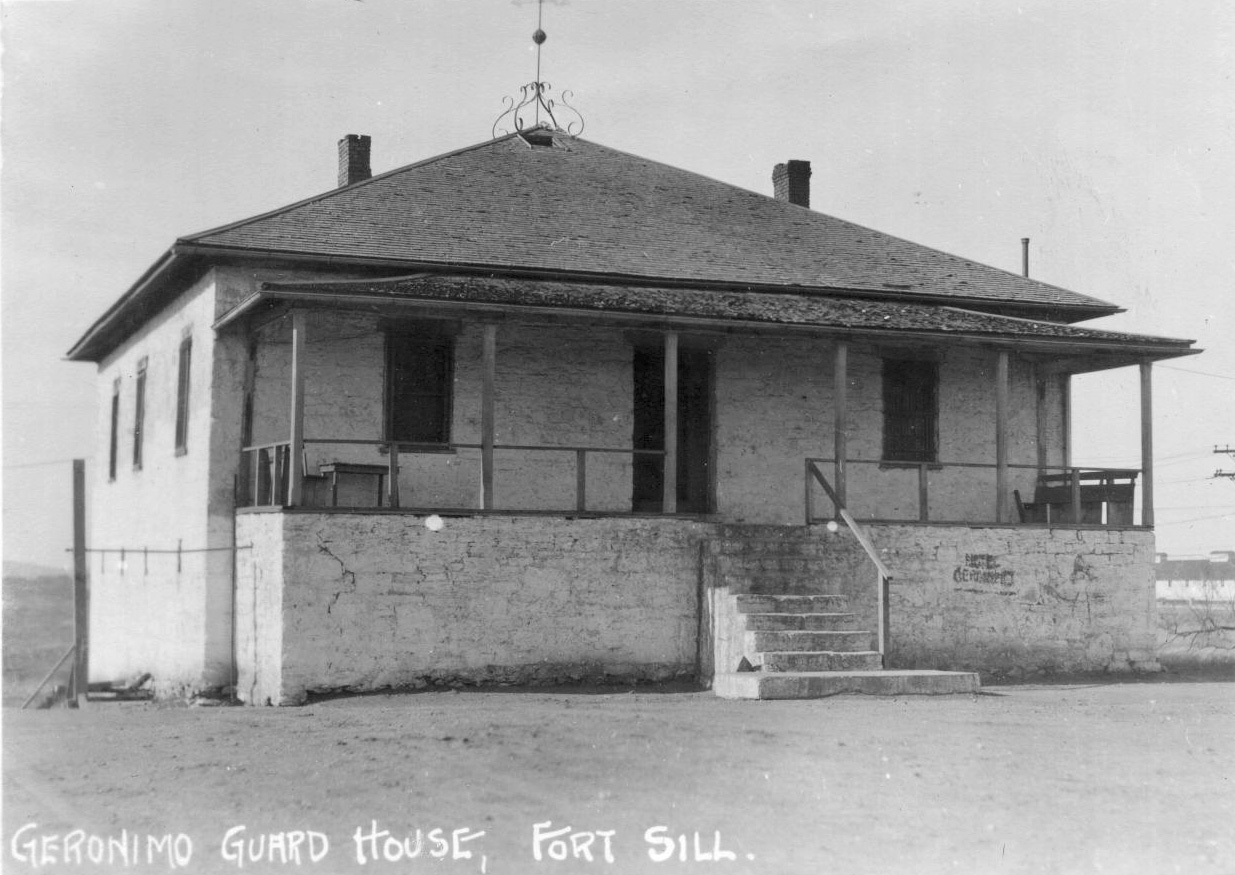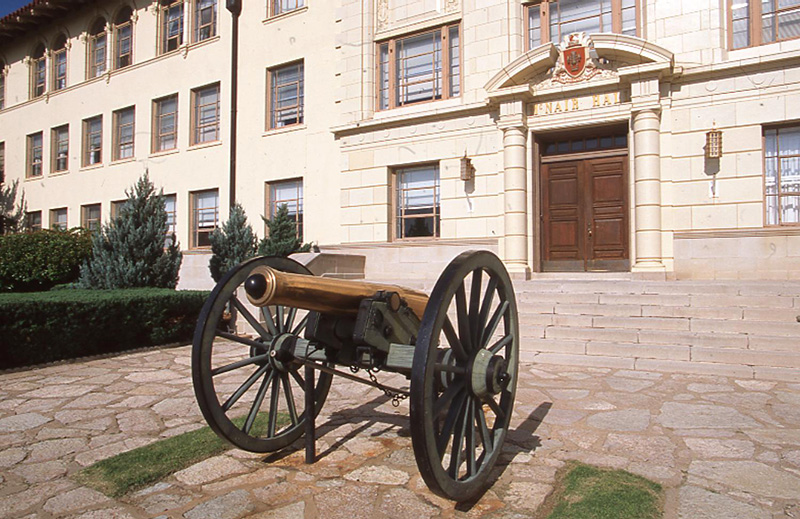
FORT SILL.
Long known as the home of the U.S. Army's Field Artillery, Fort Sill evolved from a frontier cavalry post into one of the most important military installations in the United States. It has played a significant role in every major American conflict since 1869, continually adjusting to suit the needs of the nation in times of crisis. The fort dramatically assisted the integration and settlement of southwestern Oklahoma and is the economic engine that drives Lawton, presently the third-largest metropolitan area in the state.
Fort Sill was constructed on top of a plateau alongside Medicine Creek, an area long frequented by American Indians and one the Wichita are known to have inhabited by 1850. Along with the Comanche and Kiowa, in July 1834 the Wichita greeted Col. Henry Dodge and a dragoon detachment of the Dodge-Leavenworth Expedition sent from Fort Gibson to explore the region. Dodge and his men, accompanied by artist George Catlin, were followed within a few years by traders and more military expeditions. In 1843 Pres. Sam Houston of the Republic of Texas sent Joseph C. Eldridge to that vicinity to negotiate a treaty with the Comanche in order to end their raids into Texas. In 1851 Capt. Randolph B. Marcy and a company of the Fifth Infantry passed through the area and named nearby Mount Scott after Gen. Winfield Scott, a hero of the war with Mexico. Marcy first suggested the establishment of a fort at the place that became the old post site, and following the Civil War, Col. Benjamin H. Grierson and Buffalo Soldiers of the Tenth Cavalry constructed Camp Wichita there in 1868.
In 1869 the Tenth and elements of the Sixth Infantry began building a more permanent base known as Fort Sill. The fort was named by Maj. Gen. Philip H. Sheridan, commander of the Military Department of the Missouri, after Brig. Gen. Joshua W. Sill, a West Point classmate of Sheridan's killed in the battle at Stones River, Tennessee, in 1862. Grierson became the first post commander, and the fort quickly assumed an important role in policing Indian Territory and fighting against American Indians. Units from Fort Sill fought on the southern Great Plains in 1869 and in the Red River War of 1874–75. Throughout the rest of the nineteenth century they served in a variety of peacekeeping duties, policing the Oklahoma Land Run of 1889 and protecting settlers and American Indians (including Apache chief Geronimo) who lived in or were forcibly relocated to the area by the federal government.
After the end of the frontier in the 1890s Fort Sill languished, and for a time there was talk of eliminating the post and giving the land to the Chiricahua Apache. By 1905 cavalry units were gone for good, but they were gradually replaced by a growing number of field artillery regiments that saved the fort from closure. Those units required additional facilities and more room in which to train, and when plans to replace the original post with new construction were scrapped by Secretary of War William Howard Taft (who liked the history of the old buildings), the fort grew to the west and south instead.
Expansion attracted the School of Fire in 1911, the Infantry School in 1913, and the first aircraft in 1915. During World War I more than fifty thousand soldiers trained at Fort Sill, and in 1917 the Army Air Service constructed Post Field (named after Lt. Henry B. Post, a pilot killed at San Diego, California, in 1914 while attempting a high altitude record) as a home for army aviation. The Infantry School moved to Camp (now Fort) Benning, Georgia, in 1918, but the School for Aerial Observers took its place, and in 1919 the School of Fire became the Field Artillery School.
Growth continued throughout the decades that followed. A rash of arson destroyed dozens of buildings in the 1920s, but by 1930 Fort Sill became the permanent home of the Field Artillery and in 1934 of the Field Artillery Museum (presently known as the Fort Sill Museum). In World War II the fort expanded dramatically, adding courses and thousands of new students and serving as a training post for the Forty-fifth Infantry Division. The U.S. Army Aviation School was added in 1945, and the following year the U.S. Army Artillery Center was established to test new equipment and doctrine. During the 1950s Fort Sill lost its aviation school to Camp (now Fort) Rucker, Alabama, but remained active, supporting U.S. forces during the Korean War and expanding its artillery mission by acquiring responsibility for army missile and atomic warhead training. As part of that training, soldiers from Fort Sill fired a live 280-millimeter atomic round at Frenchman's Flat, Nevada, in 1953; it was the only time a live atomic artillery shell was ever tested.
Throughout the latter half of the twentieth century Fort Sill supported American interventions in Vietnam and around the world, earning a reputation as one of the best posts in the U.S. Army. The fort played a major role in expanding the nearby city of Lawton (named after Maj. Gen. Henry W. Lawton, a Fort Sill quartermaster who was killed in the Philippines in 1899). The installation helped to integrate local schools and businesses during the 1960s and supported the growth of nearby communities such as Elgin and Cache.
In the early twenty-first century Fort Sill was home to the U.S. Army Field Artillery Training Center, which offered basic and advanced training courses for enlisted personnel and officers (including the U.S. Marine Corps and students from more than forty countries), the U.S. Army Field Artillery School, four brigades of Third Corps artillery, and almost fifteen thousand soldiers. It oversaw a reservation of 93,828 acres (146 square miles), and included Henry Post Army Air Field, Reynolds Army Community Hospital, and the Fort Sill Museum, which contained the largest collection of artifacts in the army's inventory. In the future Fort Sill is likely to become the training center for Air Defense Artillery.








